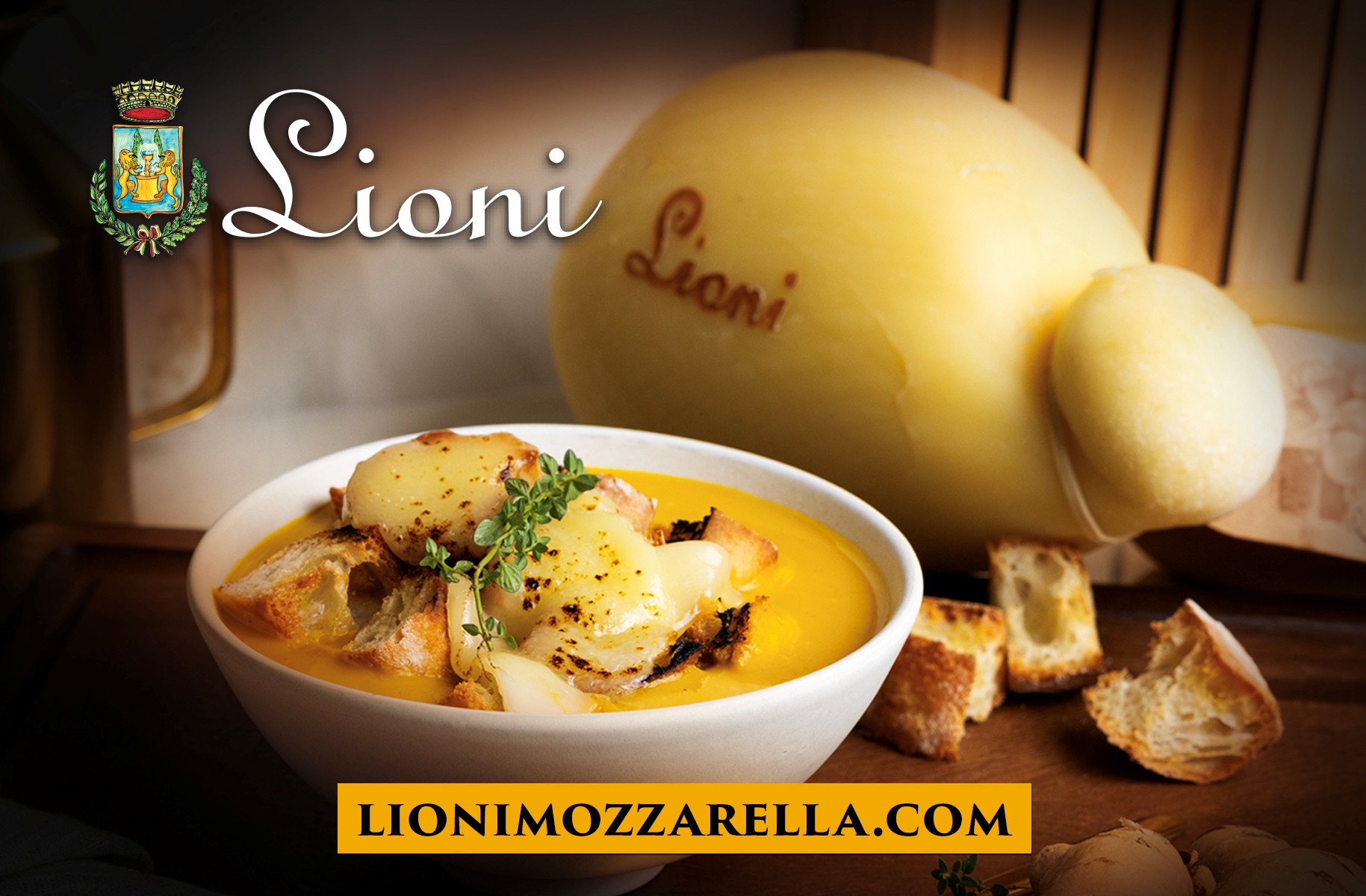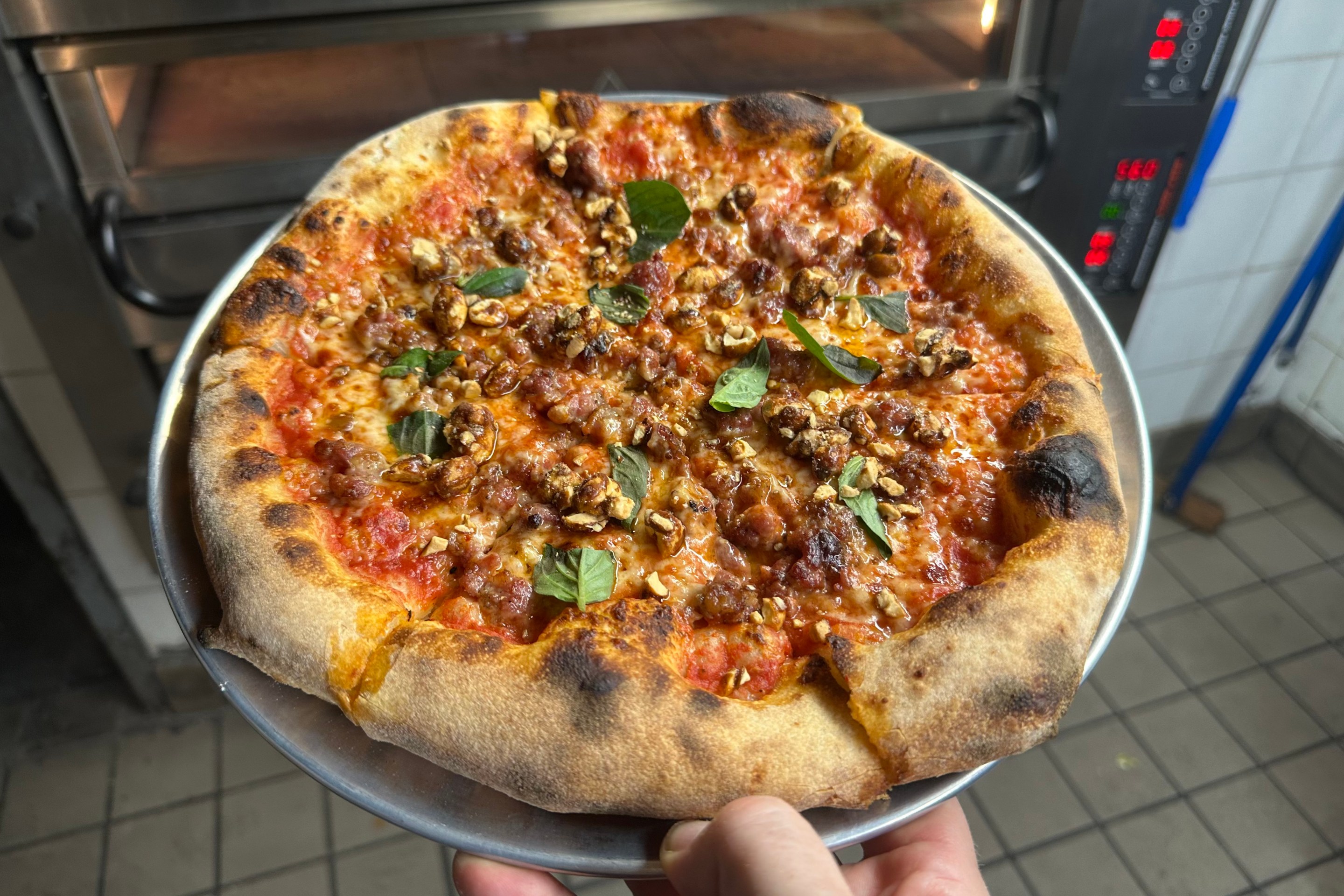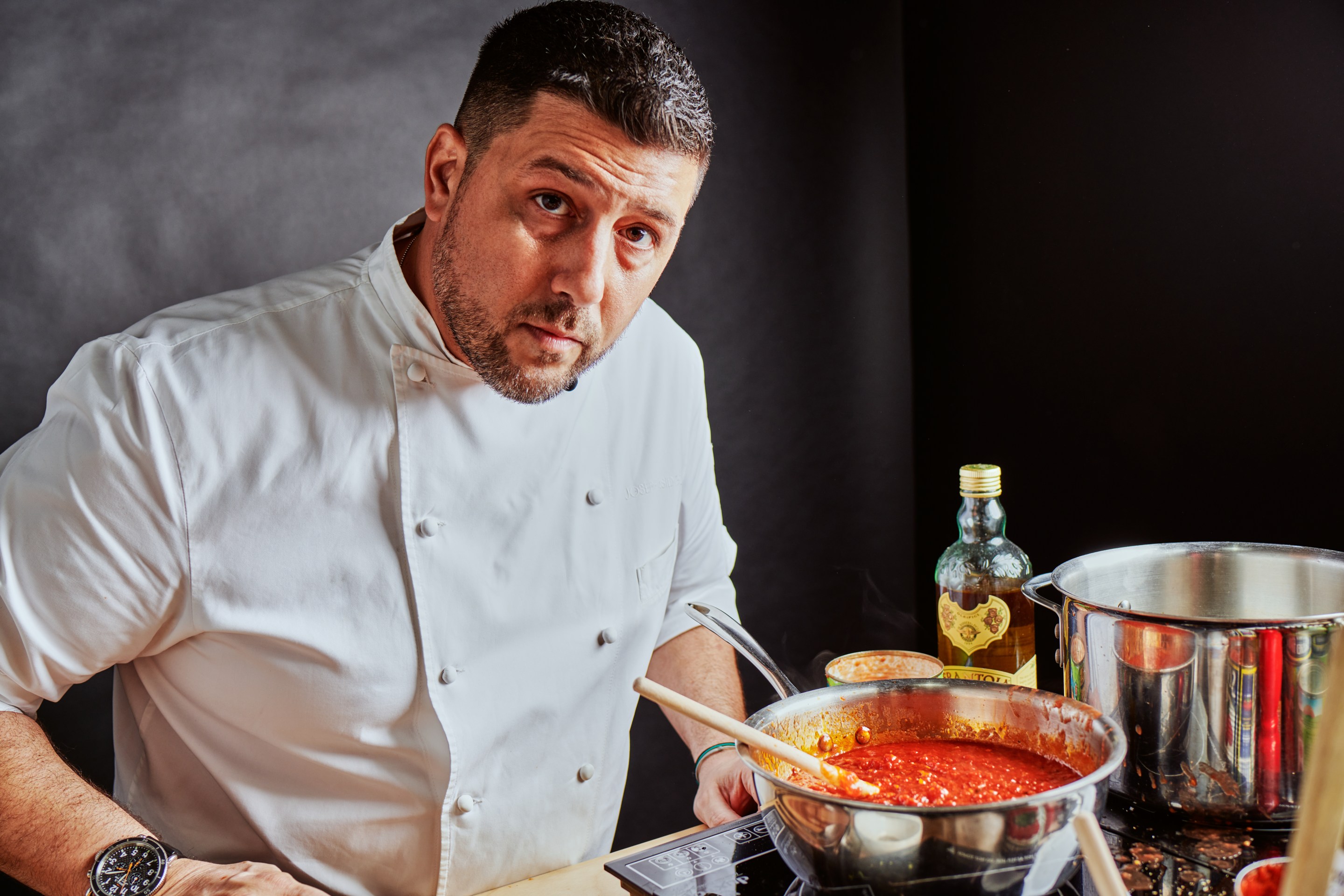There’s a very telling scene in a 2012 episode of No Reservations where Michael White is riding shotgun in a Ferrari with Anthony Bourdain behind the wheel, whipping around a racetrack in Emilia-Romagna. While most people would look panicked or wracked with fear, White appears calm if a bit uncomfortable, not because he’s nervous about Bourdain’s distracted and potentially dangerous driving, but because he is the kind of guy who likes to be in the driver's seat.
I came across the episode while preparing for my first trip to the famed food region of Italy, home to Parmigiano-Reggiano, Balsamic vinegar, and mountains of tortellini. I got my first lesson on the region’s cuisine from White himself in 2010, when he was showing me the fresh pasta station in one of his early NYC restaurants, Osteria Morini. (A six-year-stint in Italy, and in the Emilia-Romagna region, inspired his cooking, which is why Bourdain had sought him out as a co-host for an episode on the region.)
Back then, White was building the Altamarea group, introducing innovative coastal Italian to Central Park West at Marea, Italian fine dining at Ai Fiori, and rustic Emilia-Romagna cuisine at Morini. With a partner from the finance world, he built a restaurant empire that extended to Miami Beach, Dubai, Turkey, and Saudi Arabia. Then, White split from his partner—let’s just reiterate that he doesn’t like to ride shotgun—and left the group he'd created, and has laid low enough that a Google search for Chef Michael White now auto-generates a “What happened to…” prompt about him.
Well, the answer is that Michael White is back where he’s most comfortable, in the driver’s seat at the six-month-old Paranza at Atlantis Paradise Island’s The Cove, and at the newer Mirabella in the Fontainebleau Miami Beach. He’s also plotting his return to Manhattan with a splashy new project slated to open next year on Madison Avenue. In our condensed, edited interview below, he also alludes to some more forthcoming restaurants that will grow his footprint in the Caribbean.
Hi Michael. Let’s start by talking about Paranza. Your Italian restaurant there joins Nobu and Fish by José Andrés, as well as a new Alon Shaya restaurant and a Shake Shack, as a sort of Murderers’ Row of dining there, right?
[Laughs] There’s a lot going on at the Atlantis right now. I’m very happy to be a part of it.
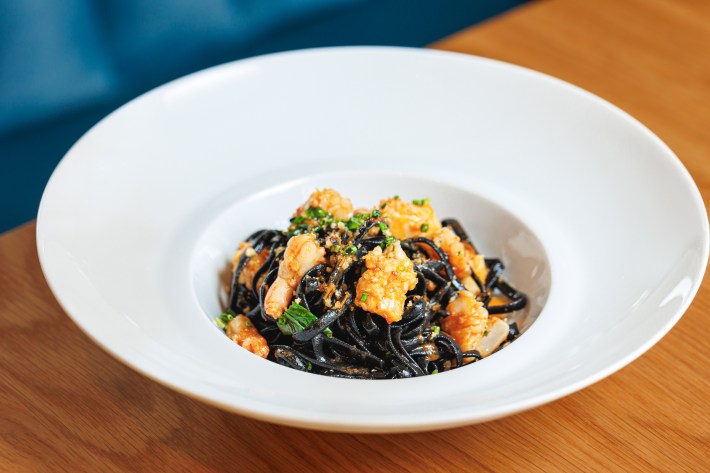
Since we started Appetito, I’ve noticed many restaurants that have opened that call themselves coastal Italian, something you perfected in New York City two decades ago with Marea. At the time, did you feel like you were doing something innovative, or were you following your own way? And how do you feel about your legacy?
I'm flattered to hear you say that. I tell you, things would have been different if social media would have been running back when we were doing all those things. I had just come from Italy, and I'm married to an Italian, and I had been in Italy for six or seven years. Coming to New York in 2001, using handmade garganelli and double-zero flour—all these types of things that we were seeking out are just at everybody's fingertips right now. I remember I started cooking at Spiaggia [in Chicago] in 1991, working with Paul Bartolotta, and we were cooking risotto [before many people knew about it here]. I'm very, very fortunate that now, at 52 years old, I feel very much a part of the fabric of Italian food in America.
You know, I feel like you deserve the recognition, and the topic dovetails nicely with what you're doing at Paranza—
I think a lot of people know, but I don't think a lot of people know, you know? I was talking to (The New York Times’) Florence Fabricant the other day and she said, “You know what, Michael? Italian restaurants are just so darn predictable.” Meaning that, you know, they start out with a couple of appetizers that consist of a raw preparation, and then there's some seasonal things. She's very much correct. With the opening of Paranza at Atlantis, I had a lot of time to think about the kind of food I wanted to make and I think what's nice is that we're reverting back to simplicity. We are looking to see what we can take out of the dishes. With all the Balsamic drizzlers and microgreens and stuff, now everything looks like flowers; it's really gotten out of control. I want to go back to the roots.
At Paranza, you’re also incorporating local ingredients, which can be challenging to source in the Caribbean. Can you talk about that?
The Atlantis and the whole team is really pushing to make food more important than it was at [tropical] resorts even a few years ago. They've really ramped up their food offerings. We can get freshly speared fish. For a chef, such as myself, and for the chefs that are from New York that are down here, it’s really fun to get groupers that are [so fresh] that you need to let them rest for a day before you can even use them.
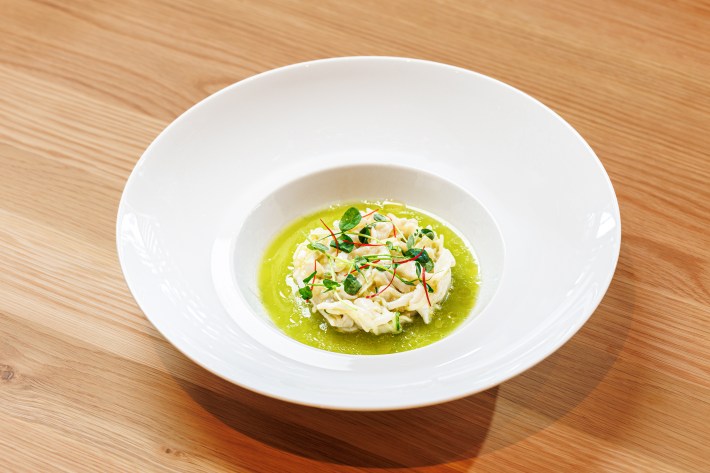
What are some other dishes that are unique to Paranza?
One of the fun things that we’re using is the conch, or scungilli. Scungilli is a small welk, and it’s well known in New York or New Jersey, but these are very large. We harvest them out of the shells and stack them in a mold and press them and freeze them, then slice them on a slicer so they’re little ribbons, and I’m doing that in a spicy acqua pazza-type tomato broth. When you’re in Nassau in the Bahamas, you’re usually having conch diced with mango and onion and tomato, like a tropical salsa. At Paranza, we’re using local product with an Italian method. It’s fun to watch the reaction of diners who are used to eating scungilli as a Christmas or holiday dish, but having it with a chilled tomato broth served tableside.
What else can you tell us about Paranza, including what made you want to open your first new restaurant in a while at Atlantis Paradise Island?
Sure. So what is probably the main customer of Atlantis is the East Coast corridor, if you will, so New York City, Boston, Long Island. It's really my customer base. And so when working with [the developer] Brookfield and Atlantis, and them wanting to have a restaurant that spoke to that clientele, it's really a natural for me to be there more than anything. It’s also close enough that I can go once a month, and that's really what I was focused on, to make sure that if I have my name on the door, I want to be present.
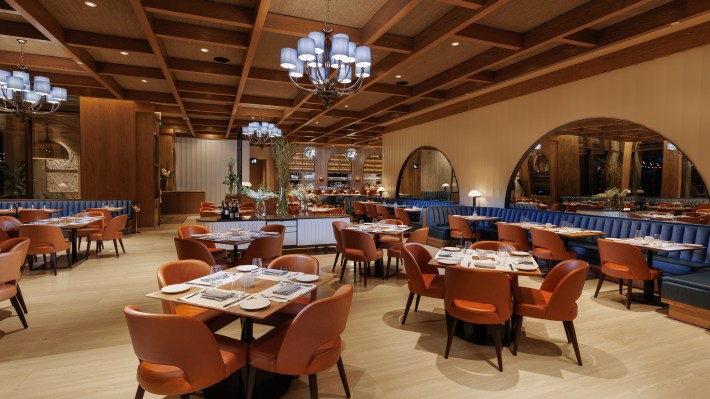
You’re speaking to me today from Miami. Do you call that home now or do you still live in New York?
I live in New York and have a place in the Hamptons, and just have an apartment here in Miami. It makes it that much easier to travel in and out and to go back and forth [to the Bahamas and New York].
What can you say about any forthcoming restaurants?
We're working on quite a few projects. I’m working on my project [at 520] Madison Avenue, where my old Alto space was. [Alto was one of White's first hit restaurants in New York City.] We're under construction right now. And that will open in the third quarter of ‘24. So that's very exciting. It's a really great neighborhood: great lunch and dinner business. Having a flag in New York City is very, very important to me and I’m excited to be 17 months away.
We can’t forget about Miami. How is that going?
We recently opened at the Fontainebleau. Mirabella is a 250-seat restaurant focused on Italian seafood if you will, but at the same time there's great dry-aged steak from Pat LaFrieda, osso buco, and real classics that you would see whether you were on the Amalfi Coast or in southern Italy, or even on the Adriatic. I'm having a lot of fun here in Miami, producing handmade pasta or doing a veal cutlet, which is something I haven't done. I really feel part of the fabric of Miami, and having something at Atlantis, and working on some new projects in Puerto Rico, this will definitely be part of my future going forward.
You've gone tropical on us?
Yeah, a little bit.

